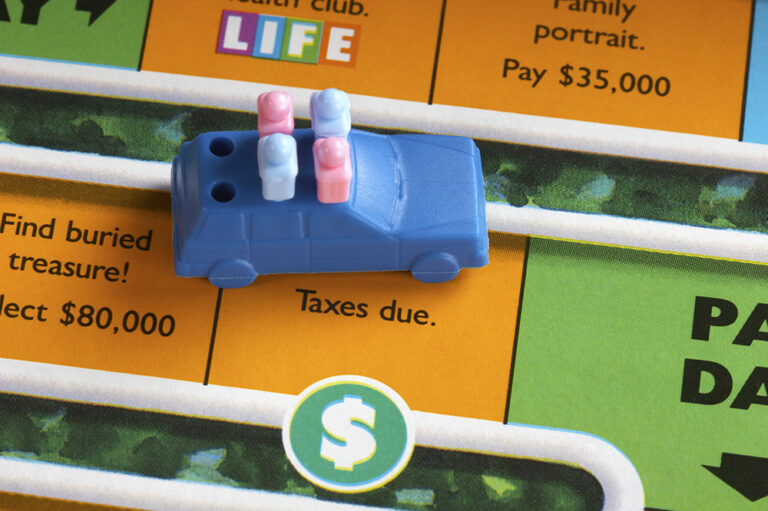The child tax credit (CTC) was created in 1997, and it is a crucial part of the tax code designed to make raising children more affordable by easing the financial burden faced by families. The CTC is a tax expenditure, and it takes the form of a per-child credit for families. It can be claimed to reduce the amount of taxes a taxpayer owes. It is also partially refundable, so if a taxpayer’s liability is smaller than their tax credit, that taxpayer may receive the difference up to a specified maximum.
The Joint Committee on Taxation estimated that the credit cost $122 billion in 2023, with 46 million taxpayers claiming the credit on their federal return.
How Does the CTC Work?
The CTC is available to taxpayers with children age 16 and under who are claimed as their dependents. Taxpayers are eligible to receive a credit equal to a percentage of their earnings, up to a maximum amount of $2,000 per qualifying child. In 2024, the credit will phase-in depending on a taxpayer’s income until it reaches the maximum credit of $2,000 for filers with one child and incomes above $31,267. The credit then phases out at incomes of $200,000 for single taxpayers and $400,000 for joint filers. Of the $2,000 maximum credit per child, up to $1,700 will be refundable in 2024. The refundable portion of the tax credit is called the additional child tax credit (ACTC).
Lawmakers have made a number of changes to the CTC over the years:
- In 2001, legislation increased the amount of the credit and made it partially refundable.
- In 2017, the Tax Cuts and Jobs Act (TCJA) made certain elements of the credit more generous, including doubling the maximum credit and increasing the amount of income at which the credit begins to phase out.
- In 2021, the American Rescue Plan Act (ARPA) made additional — yet temporary — changes including increasing the age of eligible children, increasing the credit amount by up to 80 percent, and eliminating the cap on the refundable portion. That expansion of the tax credit expired in 2022.
The expansion of the child tax credit under the ARPA, along with other programs, was associated with a significant reduction in child poverty during the years it was in effect. For example, in 2021, some measures of child poverty dropped by nearly 60 percent compared to pre-pandemic levels.
Who Benefits From the Child Tax Credit?
Most of the tax benefits from the CTC go to middle- and high-income taxpayers. In 2023, 73 percent of the tax benefits from the CTC went to taxpayers with incomes above $50,000. Low-income taxpayers are not eligible for the full credit because of the income phase-in. A single filer is not eligible for the full refundable portion until they make more than $13,833, and the full, nonrefundable credit is not available for those making less than $31,267. By comparison, the Earned Income Tax Credit, which also benefits children, targets lower income taxpayers.
A study by researchers at Columbia University found that 23 million children did not generate the full tax credit under the CTC structure prior to the ARP. Of those children, 50 percent are Black non-Hispanic and Hispanic, and 70 percent are the children of single parents who are female.
Effects of the CTC
While most of the benefits from the CTC flow to middle- and high-income families, it remains a significant tool for reducing child poverty. In 2022 the CTC was the largest program benefiting children, with more federal spending for children than Medicaid or the Supplemental Nutrition Assistance Program. Along with the EITC, it reduced child poverty by 4.9 percent in 2022. Moreover, a report from the Urban Institute suggests that over the long-term, the EITC and CTC can improve children’s educational and health outcomes along with other benefits.
The Child Tax Credit and the Budget
The CTC is among the largest tax expenditures — in 2023 it was the fourth most expensive tax expenditure and cost $122 billion, with $74 billion in tax reductions and $48 billion in refundable tax credits. The enhancements made to the CTC under the TCJA are set to expire at the end of 2025, at which point expenditures for the credit would decline by nearly 50 percent.
What Reforms to the CTC Have Been Proposed?
Proposed reforms to the CTC generally center on making the credit available to more low-income families as well as making it more generous. Proposed reforms include permanently codifying some of the provisions in the ARPA. Others include:
- Phasing-in the credit at the first dollar earned so that more low-income families can benefit, and, for certain families, increasing the phase-in rate so that families with lower incomes can receive the full benefit; and
- Redesigning the CTC so that it pays out a set amount per child and clarifying certain requirements of the credit to reduce complexity.
Conclusion
The CTC is a powerful and popular tool that provides assistance to families with children, and while it represents a small part of overall spending, it is one of the largest tax expenditures and a key part of our nation’s fiscal picture.
Photo by FatCamera/Getty Images
Further Reading
Infographic: How Are Capital Gains Taxed?
The capital gains tax, which is a levy on said profits, is categorized as part of individual income tax revenues, but it is administered at a lower rate than ordinary income.
Quiz: How Much Do You Know About the U.S. Tax System?
The lengthy and complex United States tax code can be difficult to understand. Take our quiz to see how much you really know.
No Tax on Social Security Would Weaken Both Social Security and Medicare
Republicans in Congress are considering several new tax cuts that would reduce federal revenues by trillions of dollars over the next decade.


